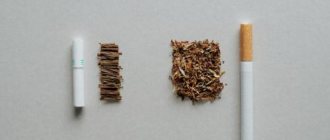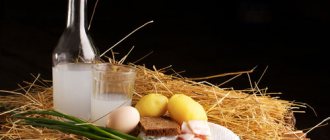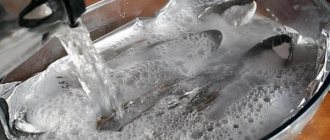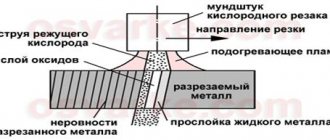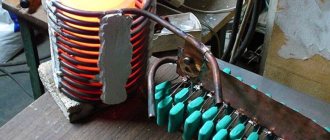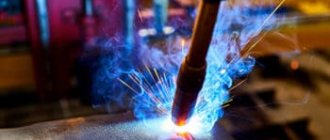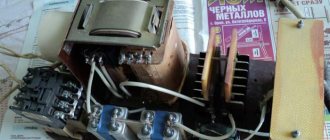At what degrees does moonshine burn? This question is of interest, perhaps, only to those distillers who do not have specific experience in the production of alcohol. But experts know exactly when moonshine starts to burn and why this happens.
There are several ways to determine the alcohol concentration in moonshine, including going through a “test by fire.” It is set on fire using matches or a lighter, in this way determining not only the strength, but also the taste of the distillate produced at home.
Why check the burning temperature of alcohol? What determines the degree of combustion of alcohol?
Igniting alcohol (more precisely, the vapor of the alcohol it contains) is a reliable way to test its quality. Using this method, alcoholic drinks are tested for properties such as:
- concentration of ethyl alcohol. The degree of alcohol combustion directly depends on this indicator. The higher the strength of the drink, the brighter and longer the flame burns;
- presence of methyl alcohol. The flame from the combustion of methyl alcohol has a characteristic green color;
- presence of foreign impurities (fusel oils). This indicator is determined by the liquid remaining after the alcohol vapor burns out.
The method remains relevant today, when the risk of purchasing a diluted counterfeit, low-quality or deadly drink has increased significantly.
Homemade alcoholic drinks
In our country, the population consumes not only drinks that are sold in stores. After all, in order not to worry about how many degrees there are in vodka, you can produce it yourself. This is exactly what many of our craftsmen do, delighting their guests with delicious tinctures and liqueurs.
Homemade alcoholic drinks come in different strengths. To understand how many degrees there are in the liqueur, vodka, or rather information about its strength, will not be enough. Some specialists are able to make a liqueur from ordinary forty-proof vodka in combination with berries and herbs that will have fifty degrees of strength. It all depends on the age of the drink, additives and, of course, the recipe. And quite often it is kept secret by several generations of one family.
At what degrees does alcohol burn?
Ethanol or ethyl alcohol in its pure form is a flammable liquid, the strength of which is 94-95 degrees. Easily ignites at a temperature of 18 degrees. It can burn even at low temperatures (in case of evaporation).
It is the process of evaporation of alcohol vapor from the surface of the liquid that causes the combustion of all strong alcoholic drinks.
The ethanol combustion process has the following characteristics:
- alcohol burns quickly;
- the flame is strong and stable;
- extinguishing the flame is difficult.
At what degrees does vodka burn?
Practice shows that a barely noticeable combustion process of vodka begins if its strength is 38 degrees. Real flames can be observed in drinks with a strength of over 40 degrees.
Why doesn't vodka burn?
The lack of combustion of vodka can be caused by the following reasons:
- insufficient alcohol concentration. An obvious indicator of poor product quality, because the strength of vodka according to standards cannot be lower than 38 degrees;
- low temperature of the drink. To burn alcohol vapor, a temperature of 23 degrees and above is required;
- the surface of the vessel chosen for the experiment is not wide enough. This circumstance greatly impedes the flow of oxygen necessary during the combustion process.
How to set fire to vodka?
To carry out the experiment you will need:
- warmed vodka;
- a vessel with a wide surface (spoon, lid, saucer);
- matches or lighter;
- room at room temperature.
Having prepared everything you need, all that remains is to set fire to the vodka and observe.
What you should pay attention to during the experiments:
- vodka, even high-quality one, does not light up quickly;
- the combustion process occurs only at the surface (after all, it is not the drink itself that burns, but the alcohol vapors released by it);
- A very small amount of heat is released;
- a normal flame is light blue; if other shades are noticeable (especially green), the drink may be life-threatening due to the presence of methyl alcohol in it;
- the intensity of the color and flame depends on the concentration of alcohol contained in the vodka; at low concentrations the flame will be faint and will go out quickly.
Expert opinion
Irina Kvazarova
Alcohol production technologist
After the fire dies out, the remaining liquid should ideally be clear and free of unpleasant odors. If an oily liquid remains, it means that the vodka contains a lot of fusel oils.
How to distinguish methyl alcohol from ethyl alcohol at home
There are several ways to distinguish food grade alcohol from technical grade alcohol at home. Each of them, provided the experiment is carried out correctly, allows you to distinguish good alcohol from bad with a fairly high probability. If the results of several types of tests are the same, the type of substance can be determined with high probability.
Some of these methods include the following.
Flame color
One of the simplest means to distinguish drinking alcohol from technical alcohol is to set it on fire. Ethanol will have a bluish flame color, while methanol will have a greenish flame color.
Reaction with potatoes
When peeled potatoes are placed in a container with alcohol, the type of substance can be determined by the color change of the vegetable. For the reaction to occur, it is necessary to soak the potatoes in alcohol for at least two hours. If the color of the potatoes changes to pink, this indicates methanol.
Boiling temperature
Another way to distinguish industrial alcohol is to monitor its boiling point. Ethanol boils at a temperature of 78 °C, and methyl already at 64 °C.
Reaction with baking soda
When mixed with ethanol, baking soda produces an insoluble yellowish precipitate. Methyl alcohol remains clear when soda is dissolved in it.
Reaction with potassium permanganate
You can also distinguish medical alcohol by adding a little potassium permanganate to it. In the case of ethanol, this will not cause any visible reaction. The reaction of methyl alcohol will produce gas and the smell of formaldehyde.
Formaldehyde test
This method, which allows us to distinguish drinking alcohol from methanol, is considered the most reliable.
To carry it out, it is necessary to lower a red-hot copper wire into the alcohol being tested. If this results in the release of a strong odor of formaldehyde, then this is methyl alcohol. When ethanol reacts, it produces an apple cider vinegar smell.
Lang's test
This method of distinguishing industrial alcohol from medical alcohol will require the presence of potassium permanganate, as well as a small container in which the alcohol can be heated.
To conduct the study, you will need to dilute 0.2 g of potassium permanganate in 2 ml of distilled water. Then heat 50 ml of alcohol to 18 ° C, pour the potassium permanganate solution into it and note the time when the color of the solution changes from purple to pink. If it took 10 minutes or more, then most likely you have ethyl alcohol.
At what degrees does moonshine burn?
Having a strength of 40 degrees or more, moonshine burns evenly and continuously, the color of the flame is blue. If the degree of the drink is below 40, then the flame is weak, intermittent, periodically almost goes out and rises again. If the temperature drops significantly (below 30), the moonshine will not burn at all.
Setting fire to the moonshine, evaluate:
- degree of combustion;
- odor emitted during combustion (a strong unpleasant odor is produced by the drink, which is dangerous for consumption).
Use this method in the following cases:
- to ensure quality when purchasing (especially from hand): check the concentration, the absence of methyl and third-party impurities;
- to determine the need for a second distillation;
- before preparing certain dishes whose recipes are based on frying using an alcohol flame.
Absinthe
First you need to set fire to ice-cold absinthe. Then put a piece of sugar on a special spoon and hold it over the burning alcohol. The sugar will begin to melt and drip into the glass, crystallizing at the bottom. When the number of round brown crystals fills the remaining fifth of the glass, remove the spoon with sugar. Prepare a cocktail tube.
Blow out the flame and immediately, lowering the straw into the glass, without stopping, drink through it all the liquid contents of the glass in a few quick large sips, making sure to pass it all over your tongue in order to feel the taste more deeply. If everything is done quickly and correctly, the sharp transition from the scaldingly icy absinthe at the bottom to the unbearably hot on the surface, accompanied by a pleasant sweetish aftertaste, will become one of the most unforgettable sensations that you will want to experience again and again.
Undoubtedly, burning cocktails are an exciting and aesthetically pleasing sight. But the first and most important thing to always remember is safety precautions. It’s not for nothing that there is an expression: “If you like to drink absinthe, you also like to wear wigs.”
Does wine burn?
The strength of traditional wines does not reach the 30-degree mark, which means that the wine will not burn under normal conditions. You can achieve the wine flame only:
- if you heat the drink very much (you will be able to “squeeze out” a small flame);
- by including wine in a fiery cocktail.
Does cognac burn?
Should cognac burn? There is an opinion that noble cognac may not burn, explaining the phenomenon by the peculiarities of production. It’s as if the drink, aged in oak barrels for several years, absorbs tannins that prevent ignition. In fact, this statement is false. All alcoholic drinks burn above 30 degrees. Cognac spirits, the concentration of which should be about 40%, burn with an even blue flame.
Cognacs of various brands are often used as the basis for flaming cocktails.
Some interesting facts about alcohol strength
Sometimes store-bought vodka burns poorly not due to defects or dishonesty of the manufacturer, but due to improper storage of the product in a warehouse or store. The contents of a clear glass bottle that is left in direct sunlight will inevitably lose its strength.
A glass of vodka left on the table from evening until morning will lose its strength. The same thing will happen with a non-hermetically sealed decanter and bottle. Even the slightest contact of alcohol with oxygen will affect the quality of the drink.
Infusing alcoholic beverages in an oak barrel has a beneficial effect not only on taste, aroma and color, but also on strength. A liquid kept in cool, dark conditions and without access to oxygen slightly gains strength over time. Ripening.
The quality of vodka sold in our stores is not always properly controlled. Here our quality control leaves much to be desired. Therefore, when you buy vodka, you need to know how to choose it correctly. About the rules for choosing vodka (). If it suddenly happens that you have already purchased vodka, but at home you have already begun to doubt its quality, then at home you also need to know how to check it.
Effective burning of alcohol when preparing cocktails
Fiery cocktails have been in fashion for a long time. Preparing and drinking burning drinks is a fascinating spectacle and gives indescribable sensations.
It was noticed that during the combustion process:
- the taste and aroma of the cocktail improves;
- the temperature of the drink increases;
- The mood of partygoers increases.
Fire cocktails, like any other, contain several components. And only one, or less often two of them are flammable. To prepare such cocktails, experts advise using drinks with a temperature of 40 degrees or higher as a basis. The higher the degree, the more spectacular the spectacle will be. You can use less strong ingredients, but then they must contain sugar.
When creating such cocktails yourself, it is important to provide safety measures in advance and strictly follow them.
If you doubt the properties of the purchased drink and know the characteristics of the combustion of alcohol, it is worth conducting a simple experiment. Conducting an experiment is not only an exciting activity, but also confidence in the safety and quality of the product.
Azaleptin as a cause of death due to alcohol consumption
A drug that is dispensed from pharmacies with a doctor's prescription. It is an antipsychotic that has a sedative effect. Its cost in pharmacies varies from 300 to 500 rubles per package. These tablets have a calming effect, a hypnotic effect, and also enhance the effect of painkillers. The peculiarity of this drug is that it enhances the effect of alcohol.
Heavy drunkards sometimes resort to its help in order to increase intoxication, since they cannot achieve the desired state only with the help of alcohol. The danger is that it is not recommended to use it with ethanol, as the consequences of overdose and poisoning may occur. Nausea, vomiting, coma, aggressive states, loss of consciousness.
Taking it with alcohol is life-threatening, but this does not stop alcoholics
Bone marrow dysfunction may occur. This combination suppresses bone marrow function and production. Which leads to death. Death from alcohol occurs when the concentration of ethanol in the blood is high, 5–7 ppm. A similar state is achieved by different people at different times and from different volumes of alcohol. This is due to the characteristics of the body, the habits of drinking often and overusing it or not drinking at all.
The hereditary factor also plays a role. Death from alcoholism is the most common cause of death. The problem develops gradually. Death usually occurs from attacks: heart attack, stroke, pancreatitis. In Russia, about 50% of all cases among the male population are associated with mortality from alcoholism.
